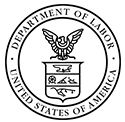Jeff Klass tells us about glass waivers and the resources you get from the IWCA/GANA/NGA Bulletins.
How do you educate your customers about caring for the glass?
 Contact Login
Contact LoginJeff Klass tells us about glass waivers and the resources you get from the IWCA/GANA/NGA Bulletins.
How do you educate your customers about caring for the glass?

Testing for Opioids and Cannabis in the Workplace PPT
Webinar Link
https://event.on24.com/eventRegistration/console/EventConsoleApollo.jsp?&eventid=1899622&sessionid=1&username=&partnerref=&format=fhaudio&mobile=false&flashsupportedmobiledevice=false&helpcenter=false&key=5FAB9615B9F49DA78A38444E62155831&text_language_id=en&playerwidth=1000&playerheight=650&overwritelobby=y&eventuserid=234254704&contenttype=A&mediametricsessionid=193711803&mediametricid=2674529&usercd=234254704&mode=launch
Article on OSHA and Drug Usage
https://www.fisherphillips.com/resources-newsletters-article-osha-drugs-and-rock-n-roll-a
*Members only have access to a Reasonable Suspicion Checklist inside Campus IWCA.
Second part of Dr Duffer’s talk about Glass Issues at the NGA Conference.
First part of Dr Duffer’s talk about Glass Issues at the NGA Conference.
U.S. Department of Labor
Occupational Safety and Health Administration
Office of Communications
Washington, D.C.
www.osha.gov
 For Immediate Release
For Immediate Release
February 16, 2018
Contact: Office of Communications
Phone: 202-693-1999
WASHINGTON, DC – The Occupational Safety and Health Administration (OSHA) and the International Window Cleaning Association (IWCA) recently renewed an alliance to continue providing training and resources to protect the safety and health of workers in the window cleaning industry.
During the five-year agreement, OSHA and IWCA will work together to address hazards, such as falls from heights, and slips, trips, and falls. Participants will also focus on the safe use of high-reach access equipment, including rope descent systems, ladders, and scaffolding.
“Falls are among the most common hazards encountered by professional window cleaners,” said Deputy Assistant Secretary of Labor for Occupational Safety and Health Loren Sweatt. “We value IWCA’s expertise, and look forward to our continued alliance to ensure workers receive information and training to keep them safe on the job.”
The alliance was originally signed in 2010, and renewed in 2012. In the past, participants collaborated to develop resources for the window cleaning industry. IWCA also supported OSHA outreach campaigns, such as the National Safety Stand-Down to Prevent Falls in Construction, Safe + Sound Campaign, and the Heat Illness Prevention Campaign. Additionally, the association has provided its members with training on the new requirements for OSHA’s Walking-Working Surfaces and Personal Fall Protection Systems standard.
IWCA is a non-profit trade association representing more than 500 member companies worldwide.
Through its Alliance Program, OSHA fosters collaborative relationships with groups committed to worker safety and health, such as trade and professional organizations, unions, consulates, faith- and community-based organizations, businesses, and educational institutions, to prevent workplace fatalities, injuries, and illnesses. Alliance partners help OSHA reach targeted audiences, such as employers and workers in high-hazard industries, and give them better access to workplace safety and health tools and information.
Under the Occupational Safety and Health Act of 1970, employers are responsible for providing safe and healthful workplaces for their employees.OSHA’s role is to ensure these conditions for America’s working men and women by setting and enforcing standards, and providing training, education and assistance. For more information, visit www.osha.gov.
# # #

December 2, 2017
Dear IWCA Members:
As you may recall, on November 17th, we informed you that IWCA sent a letter to OSHA regarding your challenges with the time constraints contractors and building owners were confronted with in the new regulations for roof anchor inspection, testing and certification. We know the IWCA was not the only group who had expressed these concerns and the purpose of contacting you now is to inform you that OSHA has replied to our voice. This letter of clarification is a great example of the public and private sector working collaboratively toward our common goal of creating a safe work environment.
OSHA understood the concerns and has issued a memorandum to all Regional Administrators with Enforcement Guidance for the Anchorage Requirements in OSHA CFR 1910.27 (b) (1).
The Memo acknowledges that due to a limited availability of qualified persons to inspect, test and certify anchorages for RDS use, OSHA is providing employers (you) and building owners additional time to comply with 1910.27 (b) (1)…PROVIDED that employers and building owners can demonstrate and document they are exercising due diligence to come into compliance with the requirements of the standard.
Simply put, OSHA will evaluate on a case by case basis, the progress towards compliance with the regulation by examining the documentation and timelines on the inspection, testing and certification of roof anchor systems.
Additionally, employers performing work on buildings may be impacted where building owners experience difficulties with compliance in a timely manner. OSHA will evaluate the extent of a contractors efforts to comply, which includes the use of other measures or to not perform work during the delay in compliance.
A copy of the letter can be found here: OSHA Memo on RDS 11-2017.
Yours truly,

Jason York
President
International Window Cleaning Association

November 17, 2017
Dear IWCA Members:
According to revised Federal Regulations, OSHA will start enforcing the Walking and Working Surface Regulations CFR 1910.27 for Rope Descent Systems beginning November 21st. As a reminder, this means that any anchorage that ropes are attached to for descending in order to access a building, shall have been identified, inspected, tested and certified (in writing) that the anchorage point meets the requirements of these regulations. The certification of an anchor for use with a rope descending system must also consider location to the vertical areas being serviced to allow for proper rigging and compliant use. Workers are not to use rope descending equipment when they have not received written verification the anchors have been certified as described.
The IWCA did participate in all the public hearings and information gathering during the OSHA promulgation of Subpart D and I, Walking and Working Surfaces Regulations. We were greatly pleased to acknowledge its publication in November, 2016 and satisfied that it incorporated many concepts from the I-14 standard such as use conditions, proper rigging and documentation identifying, inspecting, testing and certifying anchorage points prior to use. We congratulated OSHA’s adoption of these best practices and do believe this new final standard will save lives and make daily operations safer for all industries that utilize Rope Descent Systems for building façade access including window cleaning. Primarily, it will eliminate the jobsite guesswork we’ve faced for years with identifying proper anchors and their location.
It is the overall sentiment of the industry that the revised regulation has been well-received, and actions are ongoing in many markets with positive momentum. However, reports and discussions with members and associates have indicated the time it takes to educate clients (building owners/managers) to the new regulations then move toward compliance; has taken longer than members and especially OSHA previously estimated. The IWCA sent this letter to OSHA outlining our concerns and requesting an extension of the deadline. In the meantime, we recommend that the positive momentum for change be carried forward. These long awaited changes in regulations will make our industry better and will save more lives. As we already know…. good things take time and are usually very worth waiting for.
Yours truly,

Jason York
President
International Window Cleaning Association
May 17, 2017
By Stefan Bright, IWCA Safety Director
Prior to 1991, the use of rope descent equipment for window cleaning and other work at heights applications in the USA was for the most part, considered illegal. This was due to the fact that the equipment was not addressed by any regulatory or standards body. If not for the efforts of 40 or so professional window cleaners and the early founders of the IWCA, OSHA would not have held a public hearing in September, 1990 to determine the feasibility of using rope access equipment for building maintenance, particularly professional window cleaning.
The rest is now history. In 1991, Federal OSHA sent out a memorandum to all field offices in the USA notifying their compliance enforcement team that “descent control devices” (RDS) are a safe and viable means for cleaning windows and other building maintenance. OSHA outlined 8 minimum guidelines to follow when the equipment was being used and notified the affected industries that a final rule would eventually be published.
This document unleashed the use of the equipment and in a few short months, practically every window cleaning company in America was now using rope descent equipment. Regretfully, the number of accidents using this equipment actually increased. Part of the reason for this was the fact that 3 of the 8 guidelines were vague in nature and actually forced window cleaning contractors to “guess” about critical components which were actually out of their control.
Finding a sound anchor for the primary support line and finding a separate sound anchor for the systems backup safety line became an exercise in futility for just about everyone in the high rise window cleaning business. In addition to that, one of the 8 steps denoted the use of proper rigging practices, which till 1991 was a term that had not been used or defined anywhere.
The industry made every effort to remedy this dilemma with the development and approval and publication of an American National Standard for Window Cleaning Safety in 2001, when the IWCA produced the I-14.
This was the first national standard that identified and defined what a sound anchor for a primary support line and independent safety line were to be. It included proper rigging practice suggestions along with anchor placement and inspection and testing criteria. The scope of the Standard was to identify safe window cleaning practices but it actually had a much deeper impact to the industry. It became (and still is) the primary reference source for window cleaners, building maintenance workers, architects, designers, manufacturers and regulatory agencies.
Federal OSHA capitalized on the use of the IWCA I-14.1 2001 Window Cleaning Safety Standard. From 2002 to early 2016, OSHA had been referencing the Standard during the enforcement of window cleaning safety across the country. Additionally, OSHA relied heavily on the I-14.1 Standard to develop the regulations for the use of rope descent equipment in the Final Rule recently published. OSHA held 3 public hearings over a 25 year period to stay up to date with the use of rope descent systems and in November, 2016 the Final Rule on Walking and Working Surfaces and Personal Fall Protection Systems for General Industry, was published.
These regulations were developed for general industry, which includes window cleaning. Professional window cleaners will benefit because these regulations address the following: fall protection on any walking and working surface, the use of portable ladders, rope descent systems (RDS) and their anchorage points and most importantly, the training and re-training of workers in all these areas. These four items are very important topics for window cleaners across the country, and throughout the world.
The rule benefits workers in general industry by providing greater flexibility in choosing a fall protection system. For example, it eliminates the existing mandate to use guardrails as a primary fall protection method and allows employers to choose from accepted fall protection systems they believe will work best in a particular situation — such as guardrails or safety nets or fall restraint or fall arrest systems. In addition, employers will be able to use non-conventional fall protection in certain situations, such as designated areas on low-slope roofs.
It is stated in the official record that OSHA drew many provisions in the regulations from national consensus standards, including the ANSI/IWCA I-14.1-2001, Window Cleaning Safety Standard. OSHA agreed with affected parties that national consensus standards represent industry best practices and reflect advancements in technology, methods, and practices. IWCA recommends the I-14.1-2001 Standard be used as a reference source for architects, manufacturers and window cleaning contractors.
There are several important regulations which include deadlines for compliance. First, professional window cleaning contractors are required to train their workers with identifying and avoiding all fall hazards while on a walking or working surface. Additionally, workers are to be trained in the use, care and inspection of all the equipment outlined in the new regulations. To insure continued safety, workers are to be retrained in these areas on a regular basis. This training is to be accomplished by May 17, 2017.
Secondly, window cleaning contractors using rope descent systems (RDS) are required to obtain written confirmation from a building owner that the anchorage points used for rigging such systems have been identified, tested, certified and maintained so they are capable of supporting 5000lbs in any direction they are loaded per each worker attached. The enforcement of this regulation, which is a shared responsibility between the contractor and building owner, shall begin on November 20, 2017.
May 17, 2017
By Jason York, E-Z Window Cleaning
The fall as a window cleaner is the toughest time of the year. In most areas of the northern hemisphere, you are trying to get all the business in that you can before snow sets in. We all share the challenge of shorter days after daylight savings in the fall, meaning less hours of daylight. It’s like trying to stuff 80# into a 40# bag. Here’s the kicker…that’s exactly when you should invest your time planning for the next year.
Putting together a real and actionable plan is the key to running a successful business. The better and more thorough the plan, the easier it is to execute. But, putting the plan together is the key to making your goals reality. It’s as simple as setting a realistic goal. Then outlining all the steps it takes to get to that goal. When you get that done, put the numbers to it, and see if things make sense. Then apply the time frames to the steps, and Viola! You’re done! Now comes the hard part…executing that plan! Follow your plan. If it worked on paper, It should work in reality. Most business plans don’t have to be complex, unless you are starting a new business or expanding. Use it to motivate you, and use it to hold yourself accountable.
Some people look at fall as a time of shutting/slowing down. We look at it as a time where we reinvent our business for the following year. The expression, “when you fail to plan, you should plan to fail ” is so true. Leaves are falling here, and the plans are developing…Next year looks like it’s going to be an exciting year!
International Window Cleaning Association
1201 Dublin Rd Suite 136 Columbus, OH 43215 • 888.522.1905
Website design and hosting provided by CurrentMediaGroup.net